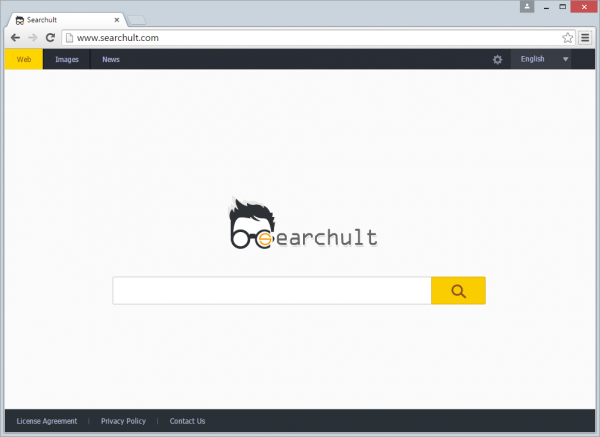What the average user should know about adware is that it infects PCs in a covert way and mainly affects the Internet browsing facet of computer usage. There exist quite a few variants of this virus cluster, but the prevalent type is just like Searchult. If you look up this term online, the respective URL, searchult.com, is going to be one of the top search engine results, which means that the service itself isn’t blacklisted. In fact, the site points to a search provider with nothing redundant in it – it’s got a logo, a search box to enter queries, and a few standard links like Images and News. Moreover, if you type something in there and click the magnifying glass button, you get a list of fairly relevant results. This entire normality of the provider under consideration turns out to be spurious at the end of the day. Most of this entity’s malicious essence lies in the framework of unauthorized things. Users don’t authorize it to install on their system, nor are they asked for approval when the adware adds a new extension and changes the basic browsing preferences. Regular, legit apps don’t act that way. Searchult does.
This potentially unwanted specimen does a good job entering PCs through undercover schemes. Using a wide range of partnering applications, it sneaks into computers without the user really knowing. Free software is likely to draw people’s attention and get popular, so the makers of adware often turn for the help of media players, various PDF based solutions, codec packs, file downloaders and similar lightweight tools that don’t require registration or payment whatsoever. When installing one of these, you are presented with a screen somewhere at the end of the process, telling you that another program is going to get in as well. Not too pleasant to admit, but many users simply click that Finish button without reading those details, but at that point they may unknowingly opt into something malicious.
Searchult gets the guise of a browser add-on when inside a target system. This questionable web service enhancement circumvents your consent while modifying the essentials of your browsing: the homepage, default search settings and new tab configuration. Whatever custom values you used had for those – they will now change to searchult.com. So, whether you like it or not, from that moment on the above-mentioned site is going to become one of your top visited pages. Again, it is a search provider powered by a third-party engine, and it also displays sponsored results. The fraudsters get the bang for their buck if lots of people go to their landing page and view or even click the ads.
This activity can be stopped, and it should be stopped by all means. To get the cleaning job done, some thoroughly tested recommendations must be followed other than simply uninstalling the add-on that doesn’t belong where it is.
Automatic removal of Searchult adware
The benefits of using the automatic security suite to get rid of this infection are obvious: it scans the entire system and detects all potential fragments of the virus, so you are a few mouse clicks away from a complete fix.
- Download and install recommended malware security suite
- Select Start Computer Scan feature and wait until the utility comes up with the scan report. Proceed by clicking on the Fix Threats button, which will trigger a thorough removal process to address all the malware issues compromising your computer and your privacy.
Get rid of Searchult using Windows native uninstall feature
- Select Control Panel entry in the Windows Start menu. Go to Programs and Features (Windows 8), Uninstall a program (Windows Vista / Windows 7) or Add or Remove Programs (Windows XP)
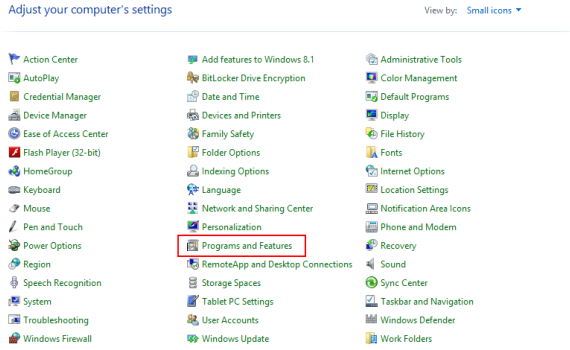
- On the Uninstall or change a program screen, find the entry for Searchult or any new application that looks suspicious. Select it and click Uninstall/Change
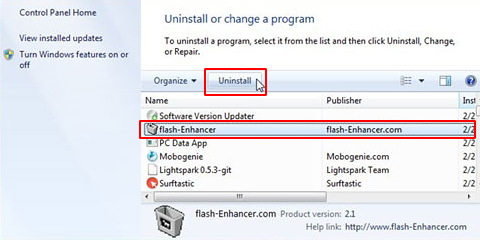
- Be advised this technique works well for the regular applications but might be inefficient for removing malicious programs.
Remove Searchult adware from web browser
The workflow below is intended to eliminate malicious objects, such as add-ons or plugins, from the browsers that got impacted. Given the persistence-related features of this particular infection, the optimal workaround is to restore the affected browser’s settings to their original state. This will prevent the virus from further interfering with your preferences.
Searchult.com removal from Google Chrome
- Click the Chrome menu icon and select Settings
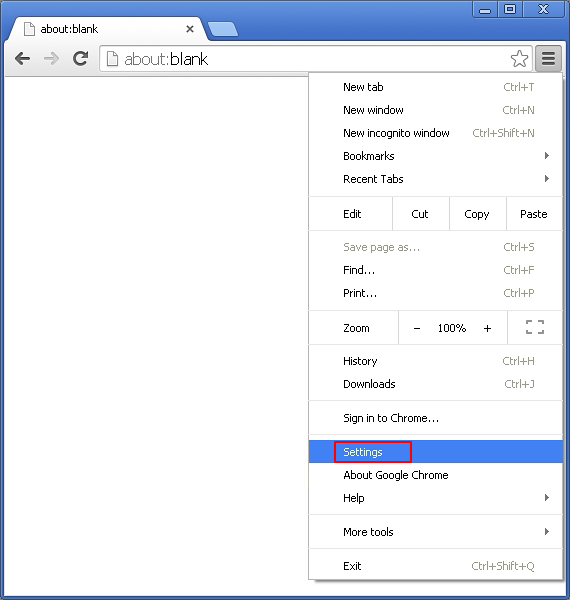
- When the Settings screen opens, find the link that says Show advanced settings and click on it
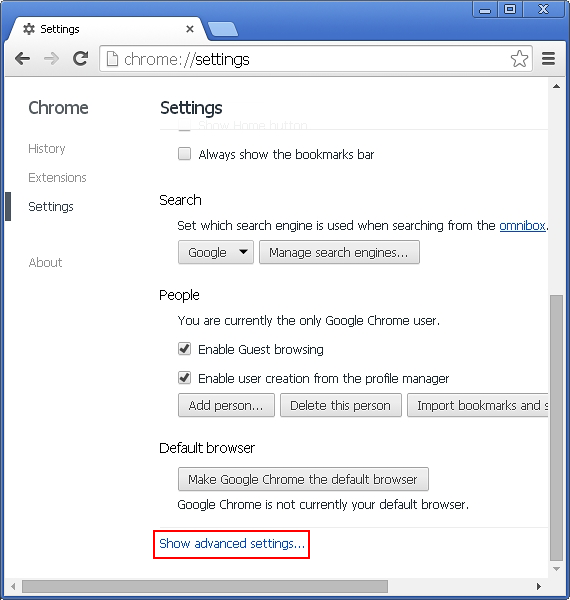
- Proceed by clicking on the Reset browser settings button
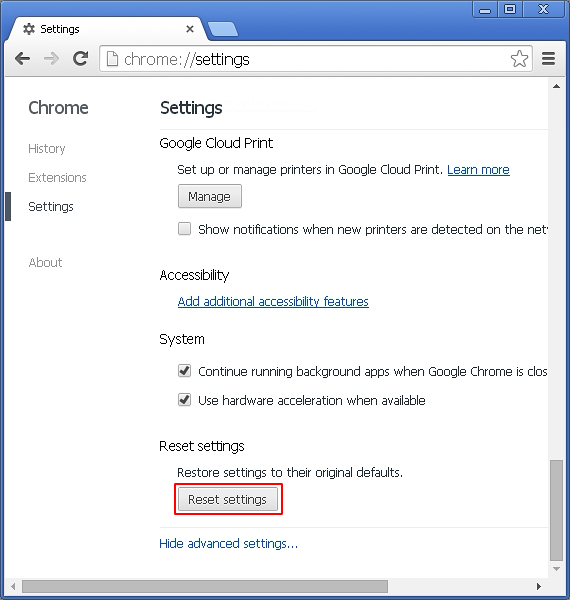
- For you to evade any unintended consequences of the reset, Chrome will display a note about the settings and fragments of browsing data that will be lost. Read the notification and click Reset in case you agree
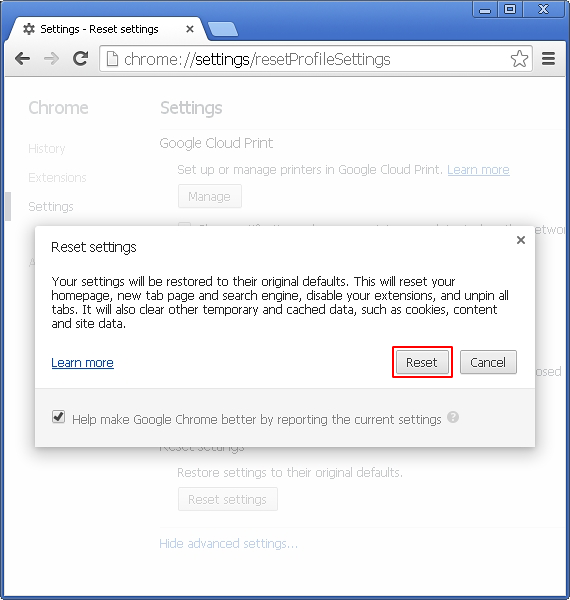
- Restart Chrome.
Searchult.com removal from Mozilla Firefox
- Open Firefox and select Troubleshooting Information on the Help drop-down list
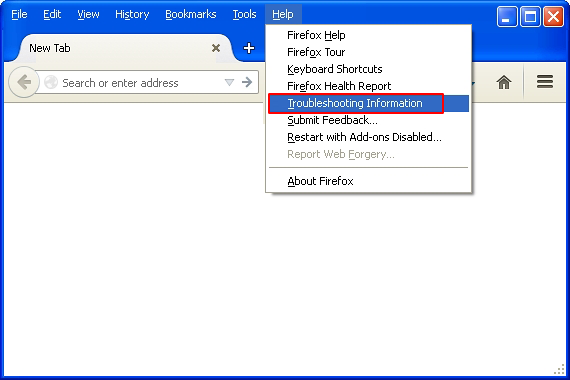
- Locate the sub-section titled Reset Firefox to its default state and click on the Reset Firefox button to proceed
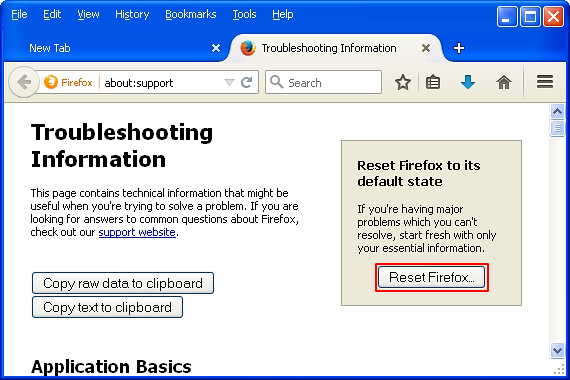
- Restart Firefox.
Searchult.com removal from MS Internet Explorer
- Select Internet Options under Tools in IE
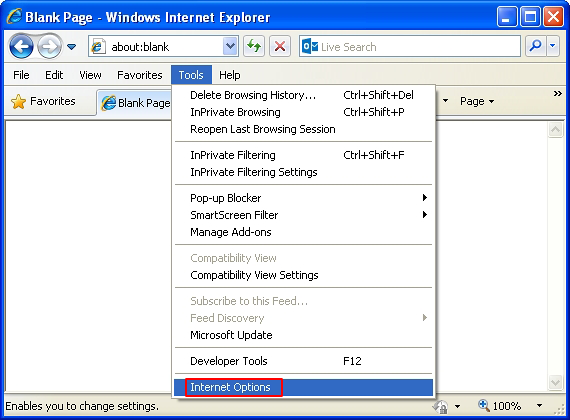
- Select the Advanced tab on Internet Options screen and click on the Reset button
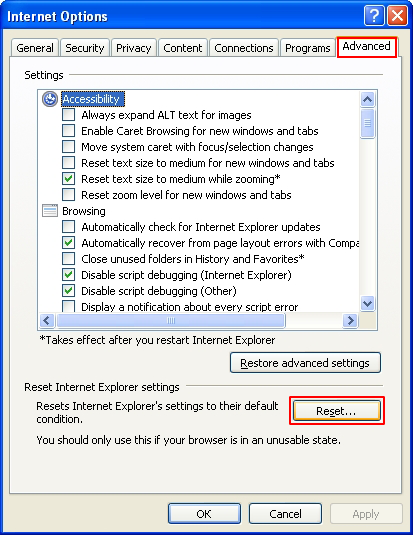
- The browser will now display the Reset Internet Explorer Settings dialog. Review the points on what the resetting includes. Activate the option saying Delete personal settings and click on the Reset button as shown on the image
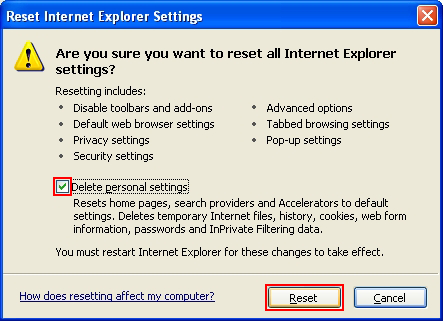
- Restart Internet Explorer
Verify thoroughness of the removal
Having carried out the instructions above, add a finishing touch to the security procedure by running an additional computer scan to check for residual malware activity
